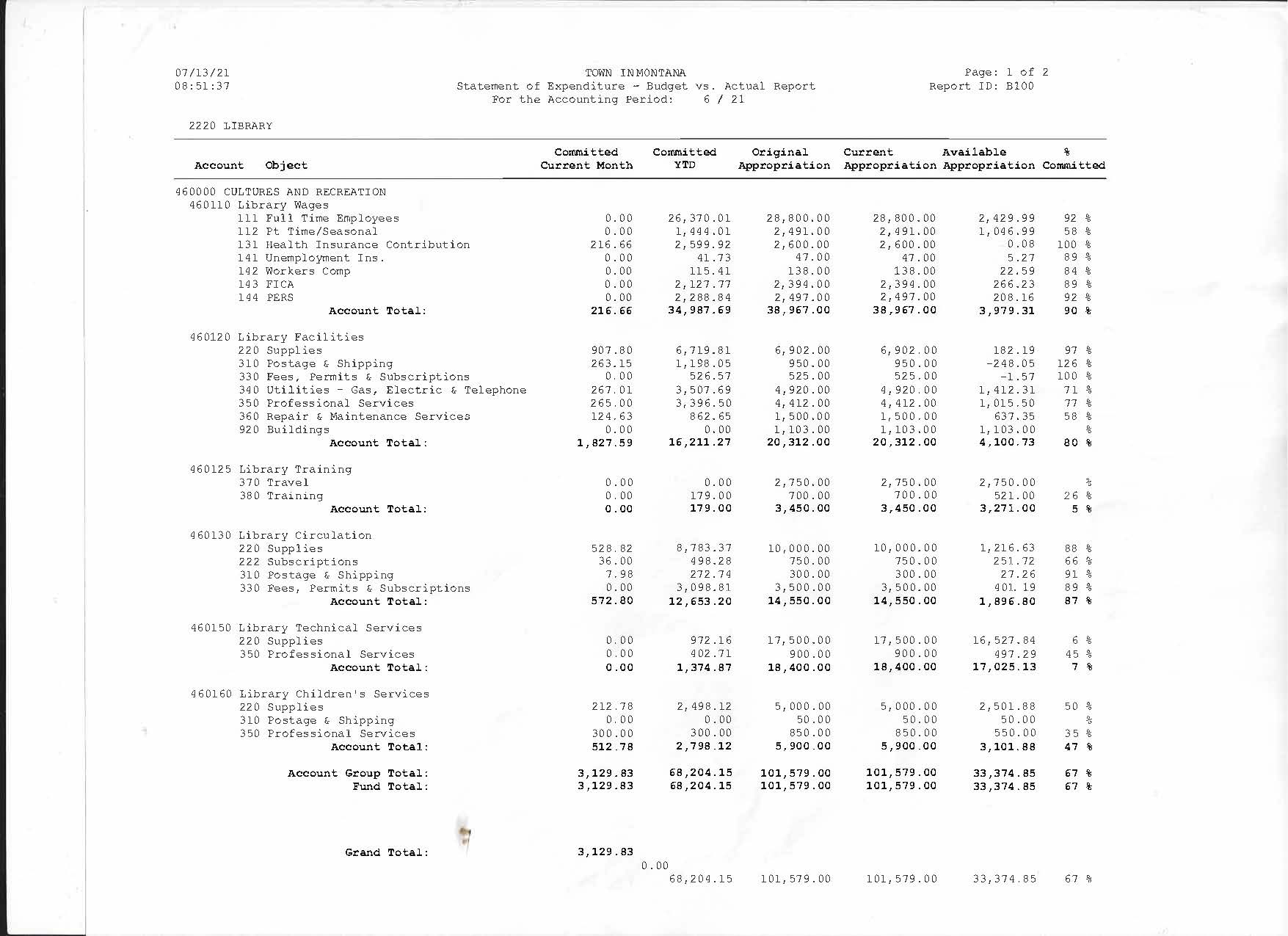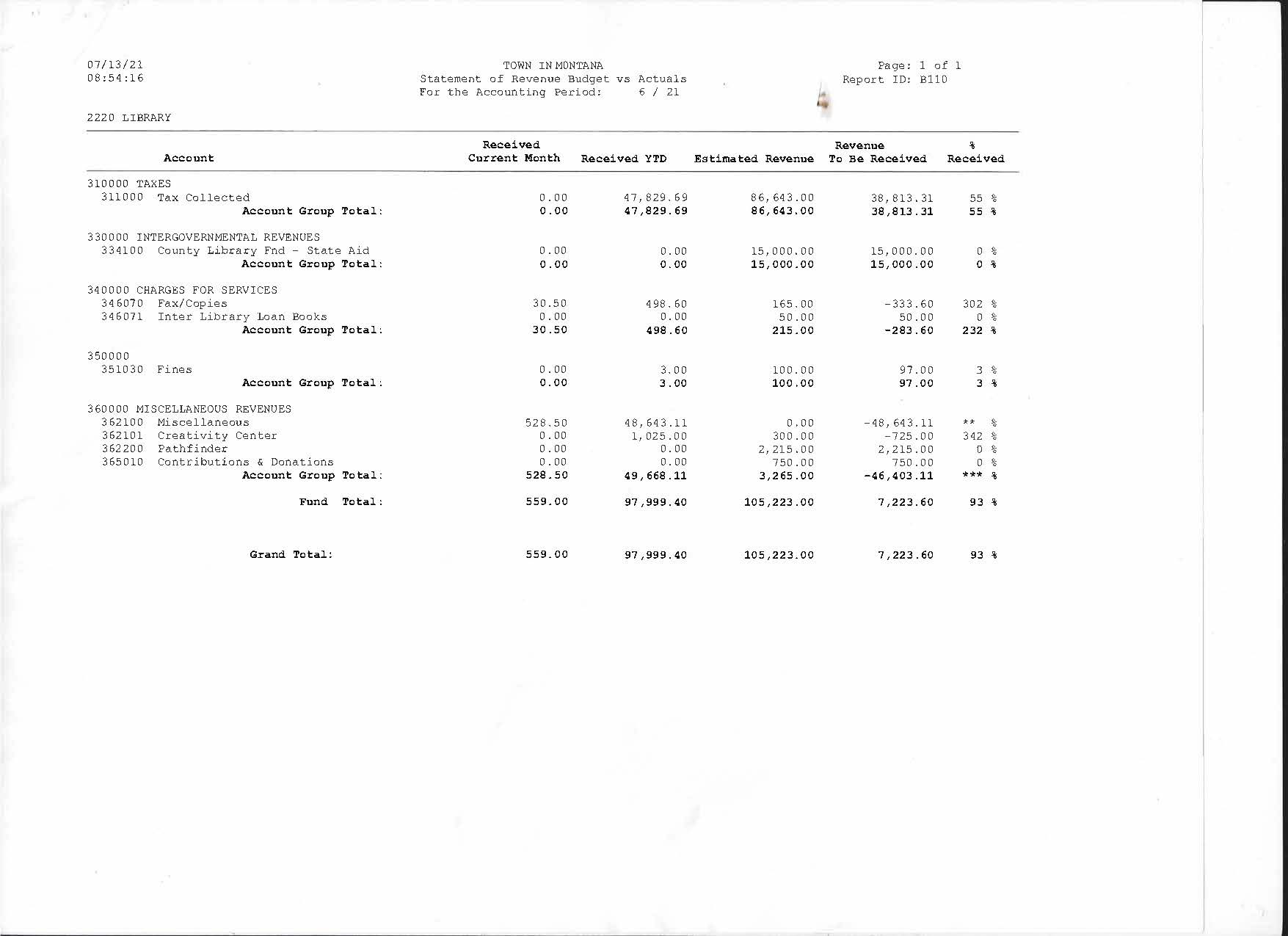Building Budgets and Reading Financial Statements
| Site: | MSL Learn |
| Course: | Trustee Essentials: Understanding Local Government Budgeting and Finance |
| Book: | Building Budgets and Reading Financial Statements |
| Printed by: | Guest user |
| Date: | Saturday, 29 November 2025, 2:15 PM |
Building a Budget: Start Here
Now that you have learned about the key terms, laws, responsibilities, and scope of local government finance, let's apply that understanding to building a budget.
This section will include steps to create a budget with examples of a real budget from a real Montana library.
Timeline
Most timelines are framed in terms of a fiscal year.
The Local Government Budget Act has a timeline and specific information that is required when creating local government budgets. Local budget hearing schedules and approvals are set by your city or county so be sure you know those dates and have your work done prior to deadlines.
Please work with your library director and through them the city or county. The process or procedure the local government wants you to follow is the one you need to use.
Simply adjust the board’s timeline to ensure that you meet their deadlines while giving yourselves enough time to prepare. The following sections walk you through how to build a library budget and use financial reports.
Sample Budgeting Calendar and Activities
Most timelines for budgets are based on a July 1 to June 30 Fiscal Year. This sample is provided to give you an idea about the specific activities associated with budgeting and when they are likely to occur.
Your actual timeline may look similar, but always sync up your activities with those of the local government.
July
- Review fourth quarter budget report.
- Review goals, objectives, and strategies for past fiscal year.
- Make adjustments for the present fiscal year if needed.
August
- Review final annual report for just-ended fiscal year.
- Approve and submit it to appropriate governing body.
September
- Begin work on needs assessment for next year.
- Brainstorm approaches.
- Delegate follow-up effort to the director and a subcommittee.
October
- Review the first quarter report.
- Evaluate objectives and strategies in progress.
- Review the previous fiscal year audit.
November
- Review present costs and projections.
- Review current needs assessment; brainstorm possibilities for responses.
- Reach agreement on prioritized needs.
- Assign further research if needed for June reporting.
- Obtain and review information on projected revenues for the coming year.
December
- Review goals and objectives for present year.
- Establish goals and objectives for the coming year based on staff, community, and other input, as well as agreements of previous month.
- Distribute goals, objectives with request for appropriate strategies and budget requests.
January
- Review second quarterly report.
- Review strategies and budget requests.
- Prioritize by objectives established in November.
- The library board should assign a committee (if not already done) to work with the director to prepare a draft budget for board review.
- Reconfirm projected revenue information.
February
- The board should review the draft budget prepared by the director and committee.
March
- The board should consider holding a public hearing on the draft preliminary budget.
- Adopt preliminary budget.
April
- Submit preliminary budget request or certified budget to funding body.
May
- Continue to work with submitted request or budget.
- Review third quarter budget report.
- Adopt final budget for next year and submit it to appropriate authority.
June
- Review and finalize any adjustments in closing out the present year.
Create a Wish List
Creating a wish list for the budget year is an essential step in building a budget for the coming fiscal year.
- What building repairs or capital improvements would the library like to make in the next fiscal year? What will they cost?
- What new programs and/or library services would the library like to offer in the next fiscal year? What will they cost?
- Does the board want to give staff raises? If so, how much? What is the cost of doing so?
- Are there any other items the library wants to accomplish that cost money? What are they and how much will they cost?
Prioritize this list. It’s likely the library won’t be able to pay for all these items.
"Normal" Expenditures
The director will collect and provide information to the board about operating expenditures for the library. In building a budget, you will need this information to understand ongoing expenditures and how much to calculate “normal” operating expenses.
- Personnel costs are the biggest portion of your budget. Calculate how much it will cost to increase salaries – if you are going to give staff a raise. Find out if there are any increases in benefit costs – like increases for health insurance or retirement.
- Check on any contractual costs the library might have. This includes things like an annual fee for the Montana Shared Catalog, Overdrive/MontanaLibrary2Go, OCLC, etc.
- Analyze how much utilities like sewer, water, phone, electric, etc. have cost the library in the last 5-6 years. An average of six years of total costs can often be an accurate estimate of what the library will need in the coming years. If you know of increases in fees or costs, add them to the total expense for that line item.
- Identify how much you want to spend on items like library materials, programming, and any other non-fixed items. Take into consideration the library’s strategic plan and any goals the library has. Does the budget reflect those goals? Are resources being put towards those goals?
- Review how much was spent on building maintenance and repairs in the last 5-6 years. What is the average? Does that number seem like a good amount to budget for the coming year? Do you have other known repairs that should be included?
- Add in the wish list items. It may be necessary to add only the top 1-2 items.

Image: Expenditure report example.
Annual Revenue Estimates
Calculate how much revenue the library will receive
- If possible, get an estimate from the county on how much the library will receive in taxes and state entitlement share.
- Check in with the State Library on how much the library will receive in state aid and federation funds.
- Review the last six years of donations, grants, etc. and estimate how much the library will receive in these categories.
- Follow the same process for charges for services and other miscellaneous revenues.
- Add any known sources of revenue such as grants or other sources of income the library receives

Compare Expenditures vs Revenues
The budget may need to be modified. The library often has more needs than it has income to pay for those needs.
Consider removing some of the wish list items or reduce the amount spent on flexible categories such as library materials.
Consider whether the library could raise more revenue. If the difference is small, is it possible for a library support organization to help with the difference? Are there grants? Are there local donors who can help?
Continue to make these comparisons until the revenues equal the expenditures.
Other Considerations
Develop a plan for maintaining and improving the building. What does it need? When will certain items need to be fixed? How much will it cost?
If there is room in the budget, consider whether to move money into a library depreciation fund or a capital improvement project. If the library has some upcoming repairs or capital work, the board can vote to set aside some funding to pay for these.
Pay attention to the cash balance. If the library is consistently showing balances that are greater than what is allowed by law, identify how to spend down the cash balance. This is one situation where expenditures will be higher than revenues.
Next, you will move on to Financial Reports.